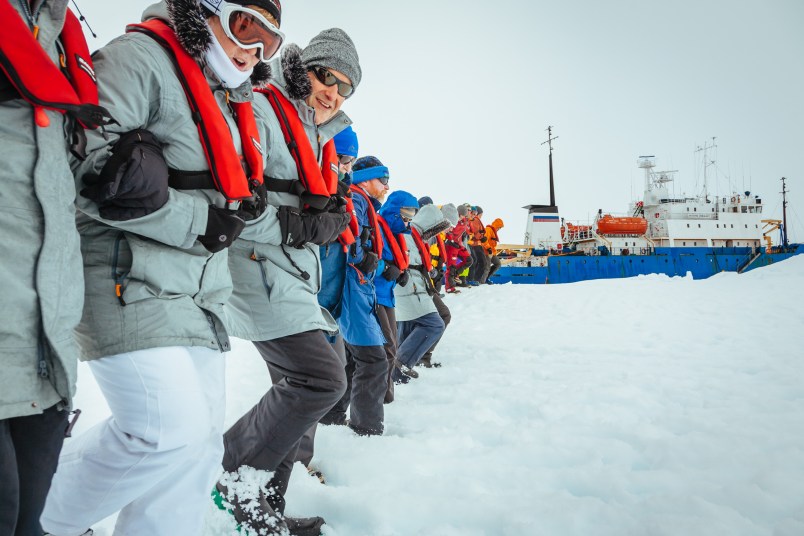CANBERRA, Australia (AP) — A helicopter rescued all 52 passengers from a research ship that has been trapped in Antarctic ice since Christmas Eve after weather conditions finally cleared enough for the operation Thursday.
A helicopter carried the scientists and tourists from the Russian ship MV Akademik Shokalski in groups of 12 to an Australian icebreaker, said the Australian Maritime Safety Authority’s Rescue Coordination Centre, which oversaw the rescue. The Aurora Australis will now take the passengers to the Australian island state of Tasmania, a journey expected to last two weeks.
“I think everyone is relieved and excited to be going on to the Australian icebreaker and then home,” expedition leader Chris Turney told The Associated Press by satellite phone from the Antarctic.
All 22 crew members stayed with their icebound vessel, which is not in danger of sinking and has weeks’ worth of supplies on board. They will wait until the ice that has paralyzed the ship breaks up.
The eagerly anticipated rescue came after days of failed attempts to reach the vessel. Blinding snow, strong winds, fog and thick sea ice forced rescuers to turn back time and again.
Three icebreakers were dispatched to try and crack their way through the ice surrounding the ship, but all failed. The Aurora came within 20 kilometers (12 miles) of the ship Monday, but fierce winds and snow forced it to retreat to open water.
On Thursday, it appeared the weather had thwarted yet another rescue attempt. The helicopter was originally going to airlift the passengers to a Chinese icebreaker, the Snow Dragon, with a barge then ferrying them to the Aurora. But sea ice prevented the barge from reaching the Snow Dragon, and the maritime authority said the operation would have to be delayed.
A last-minute change in plans allowed the rescue to go ahead. The passengers were instead flown to an ice floe next to the Aurora and then taken by a small boat to the Australian ship, Turney said.
The Akademik Shokalskiy, which left New Zealand on Nov. 28, got stuck after a blizzard pushed the sea ice around the ship, freezing it in place about 2,700 kilometers (1,700 miles) south of Hobart, Tasmania. The scientific team on board had been recreating Australian explorer Douglas Mawson’s 1911 to 1913 voyage to Antarctica.
Turney had hoped to continue the trip if an icebreaker managed to free the ship. Despite his disappointment over the expedition being cut short, he said his spirits remained high.
“I’m a bit sad it’s ended this way,” he said. “But we got lots and lots of great science done.”
__
Associated Press writer Kristen Gelineau in Sydney contributed to this report.
Copyright 2014 The Associated Press. All rights reserved. This material may not be published, broadcast, rewritten or redistributed.



